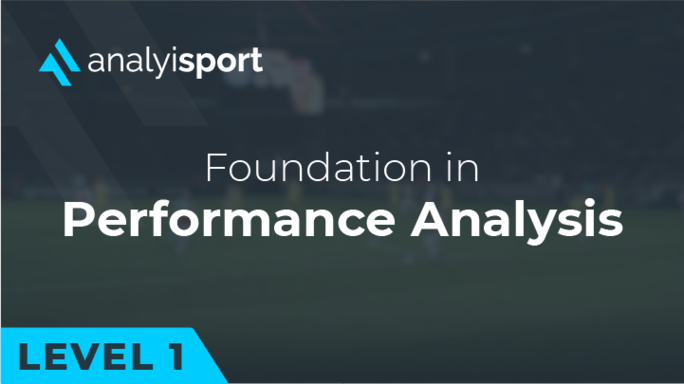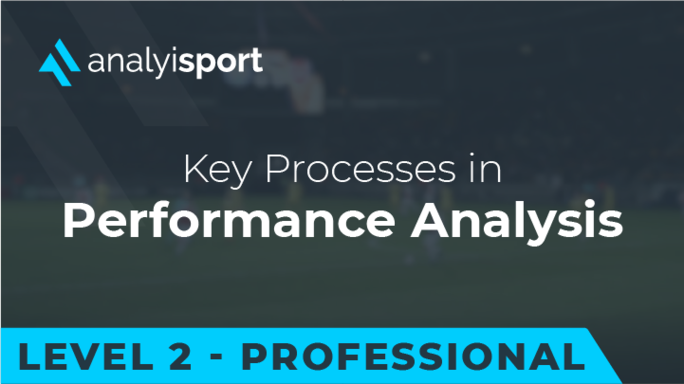What Is the Purpose of Analysis in Football
What Is the Purpose of Analysis in Football?
Football is changing. It’s becoming smarter. Clubs used to rely on subjective judgements and gut instinct to make important decisions about who to sign and which tactics to use. Now they’re using cutting-edge data science and video analysis to make better-informed choices.
Sports such as baseball and basketball have been using data for a long time, but football was once seen as too complex for data analysis. So much happens in a football match and the flow of the action makes it hard to break up the game into discreet statistics that meaningfully describe what happened. It makes it more challenging to analyse, but in recent years it’s become clear that analysts can make a big difference in football.
Data in football has taken giant strides forward. It’s becoming a regular part of how most football clubs operate, from large data departments at clubs such as Liverpool and Man City to innovative analysts working further down the football pyramid at clubs like Forest Green and Stockport County. The sport will never be the same again.
Who started Analytics in Football?
The man widely credited with introducing the idea of data analysis to football is Charles Reep, a former RAF Wing Commander who started to analyse the game in the 1950s. Due to the lack of video footage available, he had to attend games himself, going to an average of 40 games per season to make notes on what he saw. He focused on how teams scored goals, finding from his research that most goals were scored from moves that involved fewer than three passes. This led to him advocating a direct attacking style that quickly moved the ball forwards into dangerous positions.
Reep was soon offered a job by Brentford, where he helped the team to increase their goal-scoring and avoid relegation from the Second Division. He went on to work for Wolves, Sheffield Wednesday and collaborated with the head of the Royal Statistical Society.
It wasn’t until the late 1990s that a new breed of football analysis started. Both Opta and Prozone began to work in the Premier League, collecting data and working with coaches keen to embrace a more scientific approach, including Steve McClaren at Derby County and Sam Allardyce at Bolton Wanderers.
This new data revolution takes a broader and more detailed approach than Reep did, made possible by new technology such as tracking cameras and GPS vests, as well as a vastly increased amount of available video footage. It is now possible to look in detail at every aspect of the game. This means that modern analysis is far more sophisticated than Reep’s theories advocating a long ball game.
Why Do Clubs Analyse Games and Players?
Analysis helps clubs to better understand what happens on the pitch. The data doesn’t lie. It provides analysts with an accurate picture of a match that can be quantified and compared with other matches. This allows analysts to see how well a team or a player is performing and back up their assessment with precise statistics.
One area where analysis has proved successful is player recruitment. It has allowed clubs to look further afield for players, with companies such as Wyscout and Instat providing detailed data and video clips for thousands of players across the world. Clubs that could previously only afford to scout a handful of countries, can now uncover hidden gems playing in previously overlooked competitions. Searching through data also makes it easier for clubs to find the players who have the right characteristics, as they can create KPIs for each position and use the database to find players who match those stats.
As well as scouting players, teams are also using data and video analysis to scout their forthcoming opponents. Opposition analysts study the tactics that the opponent uses and highlight their strengths and weaknesses. The coaching staff can this use this information to prepare the players for the match, tweaking their tactics and making players aware of what to expect.
Analysis is also used by teams to improve the performance levels of their own players. Performance analysts will watch video footage of their team’s matches and training sessions and examine the data. They will then provide regular reports on which players are performing well, who’s underperforming, and which areas of the team’s performance need improvement. If the team is struggling to score goals, for example, they will look in detail at the team’s shots and build-up play to find out why their attacks are failing to result in more goals.
How Do You Analyse a Match?
There is more than one way for an analyst to analyse a match. It depends on factors such as which team they want to focus on, whether they want to look at data first or video footage, and what information other staff at the club want from them. Whatever approach they take, an analyst needs to know from the start what kind of thing they’re looking for. There is so much data available and only a limited amount of time to produce a report. This means they need to target the most important and relevant aspects of the match.
When analysing how a team is playing it’s important to look at the shape of the team both in and out of possession. A team might line up with a 4-3-3, but there are lots of possible variations to that shape as the team attacks and defends.
When the team is out of possession, the analyst will look at aspects such as how compact or spread out the shape is. Are the defenders close to the midfielders? They will also look at how much space is left in behind the defence. Are they pushing up high or sitting deep? The analyst wants to know in which areas of the pitch the team is winning the ball back. Does the data show that they’re making interceptions in the middle of the pitch or making tackles on the edge of their own penalty area?
In a similar way, the analyst will look at how the team plays with the ball. They will examine how they move the ball between the different thirds of the pitch. For example, do they prefer playing through balls into the final third, or do they instead slowly build possession out wide before putting a cross into the box? The analyst can look at the data to see the positions the team tends to shoot from and which players are making the most forward passes.
What Makes a Good Football Analyst?
“There is no secret recipe for success locked in the numbers,” write Chris Anderson and David Sally in their book The Numbers Game. “There is no winning formula. There is no right answer to football. But there is a way of making sure we are asking the right questions.”
A good analyst doesn’t guarantee that their team will win. But what they can do is help their club to make better decisions. A good analyst is able to interpret the data and arrive at insights that can be understood by coaches and players. They need a good eye for spotting the crucial information that explains why a team or player is performing the way they are and have the communication skills to share that information.
Football data is increasingly complex. New metrics are regularly being developed to record aspects of the game. An analyst needs to understand what the data means. If a player has a higher Expected Assists (xA) rating than a team mate, it’s the job of the analyst to be able to explain why that player is achieving a higher number.
They also need a good general knowledge of football. The more games they have watched and the more time they’ve spent talking with people about the game, the easier they’ll find it to communicate their insights. A good analyst needs to be able to talk about football like a coach. For this reason, many analysts have coaching qualifications.
How is Analytics Currently Used in Football?
The rise of analytics has started to change football, both on and off the pitch. It’s being used in more and more areas of the game, from the boardroom where it’s used to help decide which manager to hire, to the academy where clubs are using it to help youngsters develop their talents and reach their potential.
In recruitment, data is allowing clubs to find undervalued players. It’s a strategy used by teams such as Brighton and Brentford, allowing them to establish themselves in the Premier League despite their limited budgets. They’ve successfully found players such as Neal Maupay and Marc Cucurella who they’ve gone on to sell for big money.
Data is also changing the way that teams play. Clubs are looking at the data and adapting their tactics to get better results. “If you look at any league in the world, the distance from where players have taken shots was much higher ten years ago,” Ravi Ramineni, who spent nearly a decade as an analyst for the Seattle Sounders has said. “That all happened because data-analytics people have started saying: ‘Why are you shooting from there? It’s only a 2% chance!’”
Across the game, analytics is helping football clubs do things better. With a vast amount of detailed data at their fingertips, they are able to more clearly understand what happens on the pitch, finding ways to improve what they do and achieve better outcomes. As analysts develop new ways to interpret the data and new metrics are created, the changes to the game are going to keep on coming.
Related Courses:
Share this article
Our Learning Pathways
AnalyiSport is for everyone who is passionate about analysis in football. Where are you in your development journey?
Become a Football Scout
As more clubs than ever look to build data into their recruitment process, an understanding of recruitment analysis is your ticket to success in the game.
Related Articles
Our team provides news and insights from the cutting edge of football analysis.







